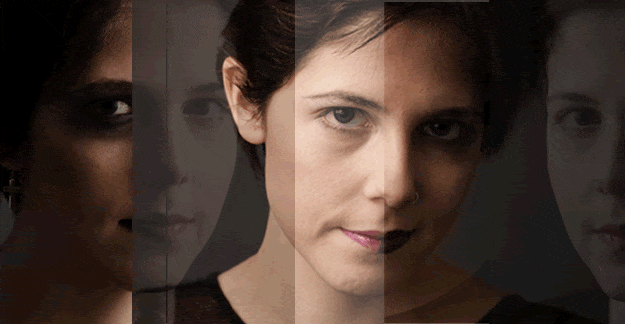Frequently asked questions about diagnosing bipolar disorder are answered by Dr. Candida Fink
An estimated 5.7 million American adults have bipolar disorder, which is a mental illness characterized by dramatic changes or shifts in mood, energy and intensity. There are five types of bipolar disorder (See Fast Facts about Bipolar Disorder), but the two primary categories of the illness are Bipolar I Disorder and Bipolar II Disorder. Bipolar I is marked by an episode of mania with high energy, exuberance, grandiose notions, sleeplessness, recklessness, irritability, volatility and sometimes psychosis, hallucinations and delusions. Bipolar II Disorder features depression along with hypomania, a form of mania that is not as acute. A number of famous people, including Ludwig von Beethoven and Vincent van Gogh, were believed to have bipolar disorder, which is sometimes glorified because of the high productivity levels demonstrated by some people who suffer from the illness. Bipolar disorder, formerly known as manic depression, is a serious, chronic illness — one without a cure and that consequently requires lifelong treatment and monitoring.

Psychiatrist Candida Fink, MD (pictured), one of the leading experts in Bipolar Disorder, is the co-author of The Ups and Downs of Raising a Bipolar Child (with Judith Lederman, Simon and Schuster, 2003) and Bipolar Disorder for Dummies (with Joe Kraynak, John Wiley & Sons, 2015). Based in New Rochelle, NY, Dr. Fink specializes in child and adolescent psychiatry, with expertise in developmental disabilities, ADHD, pediatric anxiety and mental health issues in school settings. You can read her blogs on bipolar disorder at www.finkshrink.com.
Q&A: Dr. Candida Fink on Diagnosing Bipolar Disorder is Part 1 of a two-part Q&A conducted by writer Suelain Moy for MedShadow Foundation.
Suelain Moy: At what age is bipolar disorder usually diagnosed?
Dr. Candida Fink: The average age of diagnosis is around 25 years old, but most people have been having symptoms for several years before they are diagnosed. It mostly surfaces in late adolescence or early adulthood but there are certainly younger people who can exhibit the symptoms sooner. And there also seems to be a bump a little bit later on where some people will show their first manic episode, in their 40s, later in life. The diagnosis is made primarily by a psychiatric evaluation.
SM: Why does bipolar disorder have such a late onset and is usually not diagnosed until the late teens or 20s? Is it possible for children to be diagnosed with bipolar disorder earlier?
Dr. Candida Fink: The most common age of onset for women is 25 years and for men a bit earlier. We do not understand why the brain doesn’t usually express full symptoms until young adulthood – but the pattern is similar in schizophrenia. It seems that while the vulnerability to the illness is present at birth, the major visible symptoms of the illness may not become visible until certain developmental events have occurred in the brain. The basic requirement for a bipolar diagnosis is mania and mania doesn’t usually appear until young adulthood. However, it can definitely be seen in adolescence – especially in later adolescence. Mania in its classic form is much less common in children who have not reached puberty – but it does occur sometimes. So the diagnosis can be made earlier – but it happens less frequently.
SM: Can bipolar disorder be a learned behavior? Can children learn to mimic a bipolar parent’s behavior? Is there any concern about misdiagnosis in a case like that or would the doctor not consider it a likely scenario?
Dr. Candida Fink: No – it cannot be learned or mimicked. The levels and degrees of disorder and disruption in thinking and behavior are extremely high and are hard to imitate accurately at all, even for experienced adult actors. Children might mimic or echo some pieces of behavior for short periods of time – i.e. talking loudly or rapidly – or bouncing around with a lot of energy or pacing – but children in particular would not be able to understand or recreate the profoundly disordered thought processes that go with mania. And certainly maintaining the behaviors for the duration that we see in bipolar disorder would not be possible at all. Sleep disturbance – the presentation in mania of a decreased need for sleep with a person going days at a time with little need to rest – is almost impossible to create spontaneously. The body just gives out and collapses at some point.
SM: There are reports that the number of cases of bipolar disorder is on the rise, particularly among children and teens. Is there a real growth or has the illness become easier to diagnose?
Dr. Candida Fink: The number of individuals diagnosed with bipolar disorder has risen in the last 10-20 years, especially in children and adolescents. It is likely that most of this increase has to do with different patterns of diagnosis as opposed to higher frequency of the condition. Experts in the field had been concerned that people with bipolar disorder get wrongly diagnosed with depression only and then this can cause ineffective treatment choices. So increasing awareness of bipolar disorder has increased the numbers of people correctly diagnosed. With children, however, there has been an enormous increase in the diagnosis of bipolar disorder and this has been quite controversial. There are some in the field who feel that bipolar disorder is more of a spectrum than a discrete diagnosis and that people – children especially – with mood dysregulation – i.e. temper outbursts – are on a bipolar spectrum. This has caused a tremendous increase in the number of children receiving the diagnosis. This remains highly controversial within the field, because giving that diagnosis affects a child’s life dramatically and it also creates patterns of medication use – such as very powerful medications in very young children – that can be high risk. Research into this area – particularly pediatric diagnosis of bipolar disorder – is growing – but the answers are still not clear.
SM: Are more women diagnosed with bipolar disorder than men?
Dr. Candida Fink: Bipolar Type I occurs with equal frequency in men and women. Bipolar II occurs more frequently in women. Mixed features and rapid cycling – seem to be more common in women as well. It appears that women have more co-occurring anxiety and eating disorders, while men appear to have higher rates of co-occurring substance use disorders.
SM: How is bipolar disorder diagnosed?
Dr. Candida Fink: A lot of people wonder if there are blood tests. There is no blood test and there is no brain scan that we can do clinically to say “yes” or “no” this person has bipolar disorder. It is an interview where you go over the lengthy history with the physician, including your current symptoms. They’re going to ask a lot about how you have experienced emotional and behavioral symptoms in the past, your medical history, psychological things like stress in your life, your sleep habits, energy and eating.
It’s a lengthy conversation and the doctor is going to be observing and doing what’s called a Mental Status Exam to assess how you’re speaking, how you’re acting, how you’re thinking, the process of your thoughts, how you look, your appearance, your behavior, speech, mood and affect. (Mood is how a person describes their mood state; affect is the description of someone’s mood as seen from the outside.) And then the decision of whether you have bipolar disorder is made based on the DSM- 5 criteria. It’s a checklist basically. If you meet a certain combination of symptoms, then yes, you have bipolar disorder.
And the key thing in the DSM-5 for the diagnosis of bipolar disorder is you have to have a manic episode —- you need one manic episode. You actually don’t need a depressive episode. You just need at least one manic episode to be called Bipolar Type I. That is the critical diagnostic piece for bipolar disorder: the presence of mania, or in the case of Bipolar Type II, the presence of hypomania.
SM: How would you characterize the mania that occurs in people with Bipolar Disorder I?
Dr. Candida Fink: Mania can be described as the complete opposite of depression. In depression, people have low energy, they’re not interested in anything, they feel badly about themselves, about the world, about life, they can’t think of any reason to live, everything they try to do is hard, even the basics of everyday life are hard.
Mania is completely the opposite. The person is full of energy, full of often exuberant and unreasonable optimism about everything. Everything’s great, everything’s wonderful, I can do everything, I’m going to do great things now. These people are very impulsive, they show poor judgment and their energy is very charged up. They show little need for sleep and can go for days needing very little sleep. The mood can sometimes be angry or irritable as opposed to euphoric but it’s as much the energy as the mood. It’s really charged-up. You can become psychotic, the thinking can become completely disconnected from reality, to the point that it becomes delusional in extreme cases. For example, they feel that they are actually running the New York Stock Exchange, or they’re calling NASA to tell them that they figured out something really remarkable about the universe. They have big schemes and big ideas and they see big connections in the world. The big idea—that’s one of the things I find a lot when I look at thought content in mania. They have all these big ideas, big conclusions that they have to talk about and act on and want to tell everybody about all the time. They get very frustrated when people don’t believe them or disagree with them, and that can lead to irritability.
SM: How long do these manic episodes last?
Dr. Candida Fink: Technically, the mania has to last 7 days or land you in a hospital. It can be shorter if it requires hospitalization. But if you’re just talking about outpatient, it has to last seven days to be a true manic episode. The hypomania, which is what you have in Bipolar Type II, is a state that is mania-like: high energy, high focus, high productivity, lots of thoughts and lots of action but by definition, it can’t interfere with function. For many people, hypomania is their peak performance period. They don’t ever want to get rid of that because that is a time when people are super-productive and feel really good and really “on.” So that’s the low end of mania and it’s really a positive peak status and mental state in many ways. And that, of course, is reinforced. Hypomania can evolve into a full-blown mania and then it can be blurry and hard to tell, like “Wait, is this person really going off the rails or are they just full of creativity and energy?”
SM: That’s why it’s so important to have a professional make that assessment.
Dr. Candida Fink: Absolutely. It’s tough even for the professionals, you know, because for example, the story of Bipolar II is that there’s much more of a depressive disorder than anything else. It’s chronic, recurrent, major depressive episodes, and then you have some periods of hypomania. The problem is when someone has been depressed for so long and they finally start to feel good, is this just feeling good and normal or is it actually hypomania? It can be a very tough call. It’s not always 100% crystal clear by any means. Mania is hard to miss. Once you get into the real manic stuff, it’s pretty hard to miss. Someone is just endlessly talking and thinking and doing and touching and going and spending money and sometimes dipping into savings accounts or having affairs or things like that. So it goes into another level of intensity.
SM: I think this type of productive mania has been glorified because we live in a society that rewards intensity.
Dr. Candida Fink: Yes, absolutely we do. And you know, people think that’s cool. It’s sort of glamorized in Hollywood, the intensity and wild ideas. And of course, the person subjectively doesn’t feel like there is anything wrong. They feel like everything is great, so getting them into treatment at that point is often impossible. And that’s why they’re often in the hospital when things finally crash and burn. And then they end up in the hospital and get treatment but, you know, people are feeling great and they’re convinced that they have the answer to the world’s problems. Why would you want to take them to see a psychiatrist? You’re the one that’s crazy. And then suggesting long-term treatment is a problem because people are like, “I don’t want you to take away my highs, I like my highs.”
SM: As in, “They’re productive for me”?
Dr. Candida Fink: Right. Diagnosis is not easy. Most people with bipolar disorder do have episodes of depression as well. And those can be very dangerous, of course, and those are actually often the more chronic and debilitating, and the more lethal end of the disorder. While mania is sort of the hallmark and gets all the Hollywood treatment and all the attention, more people’s lives are destroyed or damaged or even ended with depression. The mania tends to be shorter and more distinct and separated, but depression really starts to creep into everyday life all the time. The hopelessness, the low energy, and the low function can be very, very difficult and of course, suicide is a huge problem. Depression is often much worse. People come out of the mania and realize the things they’ve done, lives that they’ve hurt, things they’ve destroyed through their illness and that can just make a depression that much worse. They feel like, “Oh my God, I’ve ruined everything.” And often, they may have ruined many things.
SM: So you mean the self-awareness that follows a manic episode can actually propel them into a deeper depression?
Dr. Candida Fink: Sure. “I have no money in the bank, I’ve ruined my marriage, I had affairs, and now I have an STD,” whatever, you name it, the things that can happen in terms of bad judgment. “I got arrested, I’m in jail.” And then they come down out of it and they realize where they’ve been and what they’ve done. It can be really heart-wrenching.
SM: That is tragic.
Dr. Candida Fink: Yes, it is, because when they’re in a manic state, they don’t have any real awareness. It’s not because they don’t want to, it’s because they literally can’t tell what’s going on with themselves.
For more about Dr. Fink, visit her website at finkshrink.com. To read her blog posts, visit PsychCentral’s Bipolar Beat.






